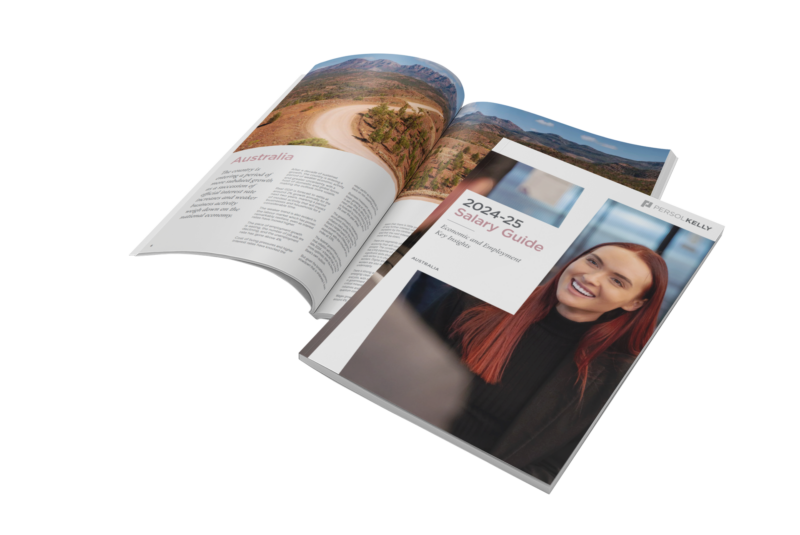By Kurt Gillam, Executive General Manager PERSOLKELLY Australia
If you Google “what are flexible working arrangements” in Australia, the Fair Work Ombudsman website will be the first link you see. It explains that some employees can request flexible working arrangements, provided they have worked for the same employer for at least 12 months.
Examples include changes to hours of work, start and finish times, patterns of work, and locations of work. Employers need to follow certain rules when responding to these requests, including guidelines on who can make a request, how to make one, and how employers must respond.

While not dismissing this valuable HR information for both employees and employers, the reality today is that flexible working is very different and complex for progressive organizations aiming to gain an edge over their competition in the war for talent attraction and retention.
Every employer I speak with across various industries wants to understand and gain insight into what we and their competitors are doing regarding flexible working. Likewise, almost every job applicant we talk to in Australia asks about the flexibility offered by the employers we are recruiting for; it seems to be the number one job search criteria at this point in time.
To help, I thought I would break it down with my view in combination with what we are observing.
My view is that flexible working lines have blurred since the COVID lockdowns. Flexible working now needs to be split into two questions:
- What FLEXIBLE WORKING options does my organisation offer to our employees?
- What HYBRID WORKING options does my organisation offer to our employees?
The reason I split them into two is this: Flexible Working, depending somewhat on the company and the specific duties of each role, is something that should be reasonably consistent and afforded to all staff in your organisation. Hybrid working, on the other hand, supports a blend of in-office, at-home or remote, and on-the-go work. It offers employees the autonomy to choose where and how they are most productive, depending on the specific duties of each role.
Flexible working for many of my team and me is about allowing an employee to achieve the required output and objectives of their job while also balancing their needs outside of work. This could mean being able to drop the kids at school, make time for exercise, have varied start and finish times, provide support for an immediate family member, work a condensed work week by working the same number of hours over 3 days instead of 4 days, flex-time, part-time work, or job sharing. Hybrid work, on the other hand, is about how many days an employee needs to be office-based versus remote.
What to Consider Before Introducing Regular Flexible Working Options?
Decide which flexible working options you can support fairly and consistently while still achieving (or even improving) the company objectives. Organisations, large and small, should review the options they can offer and provide guidelines for each. Ensure that expectations around each way of working are clearly communicated to the entire team. Transparency and trust in the workplace are crucial for successful flexible or hybrid working arrangements.
What to Consider Before Introducing Regular Hybrid Working Options?
Evaluate which aspects of a specific job can be done remotely versus in the office and how much ‘in-person’ collaboration and connection are required to achieve company objectives. Assess your organisation’s ability to support hybrid working, including the strength of the technology infrastructure. This includes systems, online collaboration tools, and video conferencing meeting technology.
The biggest issue I see from employers is not so much understanding what elements of a job can be done remotely versus in the office, but how much ‘in-person’ collaboration and connection is required in your company. We regularly see differences for new starters who employers want to be 100% office-based while they are learning or proving themselves, as opposed to experienced employees who have already proven themselves being allowed to work from anywhere. This brings the dilemma of managers wanting experienced staff around so that new starters have people to learn from (in person).
The second biggest issue I see in Australia right now is the push to reduce hybrid working and bring people back from the office. Even moving from 50-60% to 70-80% office time is proving difficult in relation to engagement and retention levels, given many employers have become accustomed to 20-30% or even less office time. As they say, it’s always hard to take something off an employee once it’s already given.
The third biggest issue I see for employers today is how they can develop consistency. The ICT team at an employer might be fine to work 100% remotely, the finance team might be 40% office time, and the sales team required to work 80% office time.
Helping Leaders Focus on Outcomes
Continuously educate and upskill your leaders to manage employees they will not see face-to-face, a must for supporting hybrid work arrangements. Trust is essential for all things flexibility. This requires a focus on setting, communicating, and achieving outcomes while also being aware of and managing any psychological challenges that remote workers might face.
If in-person connection and culture are the core reasons for asking employers to return to the office, perhaps it’s an opportunity to rethink by spending less money on office space that is only being used 50% of the time and reinvesting this saving into opportunities for connection, be it breakfasts, lunches, dinners, team-building events, or regular team conferences. Ensure that when your employees come together, it is meaningful, effective, and adds value.
Last but not least, leaders should ensure everyone is eligible for advancement and upskilling, even if they are ‘out of sight’ compared to ‘office-based’ workers. Another challenge we see from many employers and a significant reason why top talent in the market is looking at other options.
A flexible approach to work has many benefits, as does allowing hybrid working. My view is that the two need to be looked at in isolation for both you and your employees, provided you work through the above considerations and adopt the practice fairly, with the knowledge that you can’t please everyone, and that your employees may just want you to make a decision and provide clarity.
If you would like more information on how we can assist in finding talent on a temporary, contract, or permanent basis, or if you would like to access more insight into what we are seeing in relation to Flexible and Hybrid working across APAC, please contact our team.





